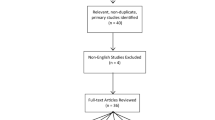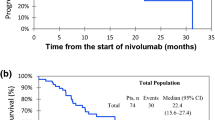Abstract
This study highlights the range of non-melanoma cancers where ICI-induced vitiligo can be present and challenges the exclusivity of this phenomenon to melanoma. We believe our manuscript will encourage awareness in our colleagues and stimulate interest in further studies to elucidate the mechanisms of ICI-induced vitiligo in both melanoma and non-melanoma cancers, and to understand whether this phenomenon holds the same positive prognostic value in both cancer groups. This is a retrospective cohort study from a single-institution’s electronic medical record for cancer patients treated with ICIs who subsequently developed vitiligo. We identified 151 patients with ICI-induced vitiligo, 19 (12.6%) non-melanoma and 132 (77.4%) melanoma patients. Time to onset of vitiligo was nearly doubled in the non-melanoma cohort, however, this is confounded by possible delayed diagnosis or under reporting of this asymptomatic condition in patients who do not regularly receive skin exams. The majority of patients had a stable course of vitiligo with 91.4% receiving no treatment in this largely Caucasian cohort. Two patients with non-melanoma cancers and Fitzpatrick type IV or above skin received treatment with narrowband ultraviolet B light therapy and topical steroids with near-complete response. This study highlights the occurrence of ICI-induced vitiligo in a variety of non-melanoma cancers, where skin of color patients will be more prevalent and the need for treatment will potentially be more urgent. Further study is needed to elucidate the mechanism of ICI-induced vitiligo and determine if non-melanoma cancers have the same association between vitiligo and increased tumor response.
Similar content being viewed by others
Data availability
De-identified data is available upon request.
References
Geisler AN, Phillips GS, Barrios DM et al (2020) Immune checkpoint inhibitor-related dermatologic adverse events. J Am Acad Dermatol 83(5):1255–1268. https://doi.org/10.1016/j.jaad.2020.03.132
Failla CM, Carbone ML, Fortes C, Pagnanelli G, D’Atri S (2019) Melanoma and vitiligo in: good company. Int J Mol Sci 20(22):5731. https://doi.org/10.3390/ijms20225731
Lolli C, Medri M, Ricci M et al (2018) Vitiligo-like lesions in a patient treated with nivolumab for renal cell carcinoma. Medicine (Baltimore) 97(52):e13810. https://doi.org/10.1097/MD.0000000000013810
Liu RC, Consuegra G, Chou S, Fernandez Peñas P (2019) Vitiligo-like depigmentation in oncology patients treated with immunotherapies for nonmelanoma metastatic cancers. Clin Exp Dermatol 44(6):643–646. https://doi.org/10.1111/ced.13867
Uenami T, Hosono Y, Ishijima M et al (2017) Vitiligo in a patient with lung adenocarcinoma treated with nivolumab: a case report. Lung Cancer 109:42–44. https://doi.org/10.1016/j.lungcan.2017.04.019
Bulat V, Likic R, Bradic L, Speeckaert R, Azdajic MD (2021) Pembrolizumab-induced vitiligo in a patient with lung adenocarcinoma: a case report. Br J Clin Pharmacol 87(6):2614–2618. https://doi.org/10.1111/bcp.14663
Kosche C, Mohindra N, Choi JN (2018) Vitiligo in a patient undergoing nivolumab treatment for non-small cell lung cancer. JAAD Case Rep 4(10):1042–1044. https://doi.org/10.1016/j.jdcr.2018.08.009
Rodríguez-Lomba E, Molina-López I, Suárez-Fernández R, Baniandrés-Rodríguez O (2018) Vitiligo-like lesions and immune checkpoint inhibition therapy: is it truly an adverse event exclusive to patients with melanoma? Clin Exp Dermatol 43(5):598–599. https://doi.org/10.1111/ced.13382
Hua C, Boussemart L, Mateus C et al (2016) Association of vitiligo with tumor response in patients with metastatic melanoma treated with pembrolizumab. JAMA Dermatol 152(1):45. https://doi.org/10.1001/jamadermatol.2015.2707
Teulings H-E, Limpens J, Jansen SN et al (2015) Vitiligo-like depigmentation in patients with stage iii–iv melanoma receiving immunotherapy and its association with survival: a systematic review and meta-analysis. JCO 33(7):773–781. https://doi.org/10.1200/JCO.2014.57.4756
Freeman-keller M, Kim Y, Cronin H, Richards A, Gibney G, Weber JS (2016) Nivolumab in resected and unresectable metastatic melanoma: characteristics of immune-related adverse events and association with outcomes. Clin Cancer Res 22(4):886–894
Villadolid J, Amin A (2015) Immune checkpoint inhibitors in clinical practice: update on management of immune-related toxicities. Transl Lung Cancer Res 4(5):560–575
Quaglino P, Marenco F, Osella-Abate S et al (2010) Vitiligo is an independent favourable prognostic factor in stage III and IV metastatic melanoma patients: results from a single-institution hospital-based observational cohort study. Ann Oncol 21(2):409–414. https://doi.org/10.1093/annonc/mdp325
Karri PV, Tahseen D, Patel AB (2020) Treatment of checkpoint inhibitor-induced vitiligo in a patient with metastatic renal cell cancer. Dermatitis. https://doi.org/10.1097/DER.0000000000000670
Grimes PE, Miller MM (2018) Vitiligo: patient stories, self-esteem, and the psychological burden of disease. Int J Womens Dermatol 4(1):32–37. https://doi.org/10.1016/j.ijwd.2017.11.005
Seneschal J, Harris JE, Le Poole IC, Passeron T, Speeckaert R, Boniface K (2021) Editorial: immunology of vitiligo. Front Immunol 12:711080
Hodi FS, Chesney J, Pavlick AC et al (2016) Combined nivolumab and ipilimumab versus ipilimumab alone in patients with advanced melanoma: 2-year overall survival outcomes in a multicentre, randomised, controlled, phase 2 trial. Lancet Oncol 17:1558–1568. https://doi.org/10.1016/S1470-2045(16)30366-7
Larkin J, Chiarion-Sileni V, Gonzalez R et al (2019) Five-year survival with combined nivolumab and ipilimumab in advanced melanoma. N Engl J Med 381(16):1535–1546. https://doi.org/10.1056/NEJMoa1910836
Topalian SL, Sznol M, McDermott DF et al (2014) Survival, durable tumor remission, and long-term safety in patients with advanced melanoma receiving nivolumab. J Clin Oncol 32(10):1020–1030. https://doi.org/10.1200/JCO.2013.53.0105
Robert C, Schachter J, Long GV et al (2015) Pembrolizumab versus ipilimumab in advanced melanoma. N Engl J Med 372(26):2521–2532. https://doi.org/10.1056/NEJMoa1503093
Hamid O, Robert C, Daud A et al (2019) Five-year survival outcomes for patients with advanced melanoma treated with pembrolizumab in KEYNOTE-001. Ann Oncol 30(4):582–588. https://doi.org/10.1093/annonc/mdz011
Funding
The authors declare that no funds, grants, or other supports were received during the preparation of this manuscript.
Author information
Authors and Affiliations
Contributions
AP conceived the project. JL conducted the chart review, wrote initial drafts, and continued to edit and revise the manuscript until submission. HH and MK assisted in the chart review, manuscript writing and editing process. AP directly supervised the first three authors and worked closely with them on this manuscript in multiple aspects, including verification of chart review data and editing the manuscript.
Corresponding author
Ethics declarations
Competing interests
The authors declare no competing interests.
Conflict of interest
The authors have no relevant financial or non-financial interests to disclose.
Ethics approval
This study was conducted under protocol PA15-0959, approved by our institutional IRB.
Additional information
Publisher's Note
Springer Nature remains neutral with regard to jurisdictional claims in published maps and institutional affiliations.
Rights and permissions
Springer Nature or its licensor (e.g. a society or other partner) holds exclusive rights to this article under a publishing agreement with the author(s) or other rightsholder(s); author self-archiving of the accepted manuscript version of this article is solely governed by the terms of such publishing agreement and applicable law.
About this article
Cite this article
Lo, J., Hanania, H.L., Keiser, M.F. et al. Immune checkpoint inhibitor-induced vitiligo in cancer patients: characterization and management. Arch Dermatol Res 315, 1697–1703 (2023). https://doi.org/10.1007/s00403-023-02577-7
Received:
Revised:
Accepted:
Published:
Issue Date:
DOI: https://doi.org/10.1007/s00403-023-02577-7




